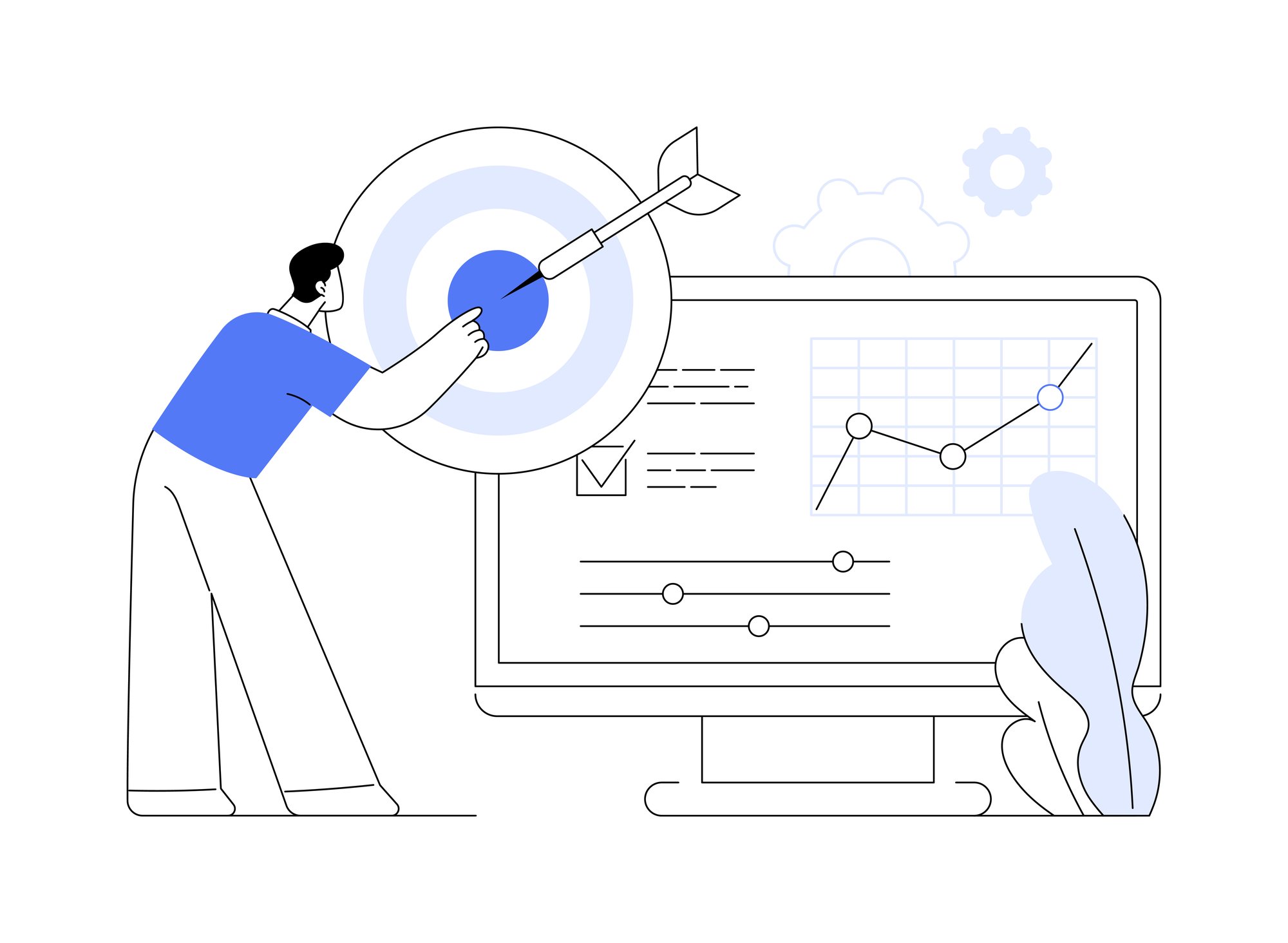
Mastering Precision: Tips for Accurate Lead Scoring in HubSpot

Do you ever feel like your sales team is playing a game of chance, wondering if a lead is ready to purchase? Lead scoring is a powerful tool that can transform your sales strategy and customer engagement. Regarding HubSpot, one of the leading CRM platforms in the market, mastering the art of lead scoring can be a game-changer.
Effective lead scoring goes beyond a simple numbers game. It's a strategic approach to prioritizing prospects based on their value to your business. It streamlines your marketing and sales strategies and ensures that you're spotlighting leads with the highest chance of converting, allowing you to focus your resources on them.
This post will show you how to master lead scoring in HubSpot for increased conversions. Learn key lead scoring strategies to boost accuracy and optimize marketing efforts—actionable insights to make your lead scoring powerful, not pointless.
Understanding Lead Scoring
Are you tired of chasing unqualified leads? Lead scoring is a technique used by sales and marketing departments to determine the worthiness of leads or potential customers by assigning values based on their behavior relating to their interest level, demographics, or interaction with your business. With lead scoring, lead prioritization becomes a breeze. These scores help companies identify high-value leads, respond to them appropriately, and increase the rate at which those leads become customers.
HubSpot's lead scoring helps you identify prospects closest to converting so your sales team can focus on closing deals. HubSpot's native lead scoring tool assigns points to your leads based on various criteria. These can include demographic information, such as industry and job title, and behavior on your website, such as page views, form submissions, and email interactions. The system tracks activity and updates scores automatically, highlighting your hottest leads.
HubSpot's accurate lead scoring system transforms lead qualification. Your sales team can ditch the guesswork and focus on hot, qualified prospects. Every marketer's dream is to craft targeted messages that resonate with each lead's unique needs and interests. It not only ensures that your sales and marketing teams are aligned but also leads to increased efficiency and productivity. By prioritizing high-value leads, your team can drive better conversions and achieve tremendous success.
Factors Influencing Lead Scoring Accuracy
Several factors can significantly influence lead scoring accuracy in HubSpot. Understanding these accuracy factors can help businesses overcome common challenges and improve their lead scoring processes.
- Quality of Data - Precision in lead scoring hinges on high-quality data. Clean, complete information encompassing demographics, past interactions, and user behavior fuels reliable scoring models that effectively identify your most promising leads.
- Data Consistency—Consistency in data recording and interpretation is critical. For instance, if different terms are used interchangeably, it can lead to confusion and inaccuracies. Creating a standardized set of terms and consistently utilizing them across the organization can significantly improve the precision of your lead scoring.
- Sales and Marketing Alignment - A shared understanding of a "qualified lead" is the cornerstone of accurate lead scoring. When both teams are on the same page, it promotes collaboration and ensures scores accurately reflect a lead's potential value. This alignment fuels effective sales strategies – your sales reps can prioritize leads most likely to convert based on marketing insights, leading to more qualified conversations and, ultimately, higher close rates.
- Regular Data Review and Update - Lead scoring models require regular review and updates to adapt to evolving market conditions, customer behavior, and business priorities for optimal performance.
One of the most common lead scoring challenges businesses face is keeping data clean and up-to-date. Old, outdated information can significantly skew your lead scoring, leading to wasted efforts and missed opportunities. Data cleanliness is vital to keeping your scores reliable, empowering you to make informed decisions throughout the lead management process.
Clean and consistent data is essential for lead scoring to work its magic truly. Both sales and marketing teams need to be on the same page about what makes an excellent lead to ensure precise scoring. Finally, the scoring model needs to be flexible and reviewed regularly to keep pace with market changes, customer behavior, and your business goals. By focusing on these areas, you can master the art of lead scoring and become a pro at identifying and nurturing your most valuable leads in HubSpot.
Tips for Achieving Accuracy in Lead Scoring

We've discussed the definition of lead scoring and established the foundation for effective lead scoring. Now, let us dive into specific lead scoring tips to maximize its accuracy:
- 1. Define Clear Criteria
- The foundation of an effective HubSpot lead scoring system lies in establishing clear and relevant criteria. These can include demographic information such as industry type or job title, engagement level measured by actions like email opens or website visits, and behavior such as downloads or form submissions. Having well-defined criteria ensures that your lead scoring aligns with your business objectives and accurately reflects the value of each lead.
- 2. Use HubSpot Analytics for Enhanced Decision-Making
- Accurate lead scoring hinges on a deep understanding of your leads, and HubSpot analytics delivers just that. You gain valuable insights into lead behavior and interests by tracking website activity, content consumption, form submissions, and email interactions. This data enables you to score engagement, segment leads for targeted nurturing, and prioritize the most qualified leads for your sales team. A data-driven approach lets you optimize your scoring model over time, leading to improved lead quality, conversion rates, and overall sales efficiency.
- 3. Regularly Review and Adjust Scoring Models
- Lead scoring models are not set in stone. They should be continuously evaluated and refined based on performance and changing business needs. Regular monitoring allows you to identify issues or inefficiencies and make necessary adjustments. Consider adjusting scores based on new patterns in customer behavior, changes in your product or service, or shifts in your market. This proactive approach translates into consistently effective marketing efforts, maximizing your return on investment.
- 4. Leverage HubSpot's Automation Features
- HubSpot automation capabilities can greatly enhance your lead scoring process. Workflows can automatically update lead scores based on a lead's actions, and lead scoring properties can help track and manage your scoring criteria. By effectively utilizing these tools, you can streamline your lead scoring process and ensure that scores are always current and accurate.
- 5. Utilize Advanced Lead Scoring Techniques
- Consider implementing advanced lead scoring techniques as your business grows and your needs evolve. Predictive lead scoring, for example, uses machine learning algorithms to predict which leads are most likely to convert based on historical data. Lead scoring based on custom properties allows you to score leads based on specific, unique attributes that are particularly relevant to your business. These advanced techniques can provide deeper insights and accuracy but require careful lead scoring implementation and management to guarantee reliable results.
Best Practices for Implementation
Achieving precise lead scoring in HubSpot requires a strategic approach. Begin with a simple foundation, focusing on a few key data points. As you gain experience and become more comfortable with the system, you can gradually introduce more complex criteria. This allows you to adjust the scoring model based on real-time results.
Consider using a mix of explicit and implicit criteria for a well-rounded view of your leads. Explicit criteria include concrete details like demographics and job titles. Implicit criteria, on the other hand, delve deeper into a lead's behavior on your website or with your marketing materials. Incorporating both types is critical to gaining a more holistic understanding of each lead's potential.
Don't forget the power of negative scoring! This feature allows you to prioritize leads that are more likely to convert based on recent interactions and job titles that align with your ideal customer profile.
Involving all relevant stakeholders is a cornerstone of successful HubSpot lead scoring best practices. Marketing and sales teams should work together to define a qualified lead. This ensures everyone is on the same page and helps maintain consistency throughout the process. This ensures consistency and alignment in lead nurturing.
Finally, remember that lead scoring is an ongoing journey, not a one-time fix. Once your model is in place, continuously monitor and test its effectiveness. Analyze the data to see what's working and what's not. Use this information to optimize your scoring model for even better results in identifying and nurturing your most valuable leads.
Turn Lead Scores into Growth Scores!
Lead scoring is more than just a numerical representation of a lead's potential value. It's a strategic tool important in marketing and sales funnels. When utilized effectively, lead scoring can eliminate a lot of the busywork and accelerate your path to sales success. Align your teams, streamline workflows, and fuel growth with a finely tuned system. Start optimizing today and watch your leads transform into loyal customers, one high score at a time.
We're thrilled to be your certified HubSpot Diamond Agency Partner at SR Professional Marketing! Let us guide you in tapping into the full potential of HubSpot lead scoring so you can supercharge your marketing efforts with confidence and ease.
